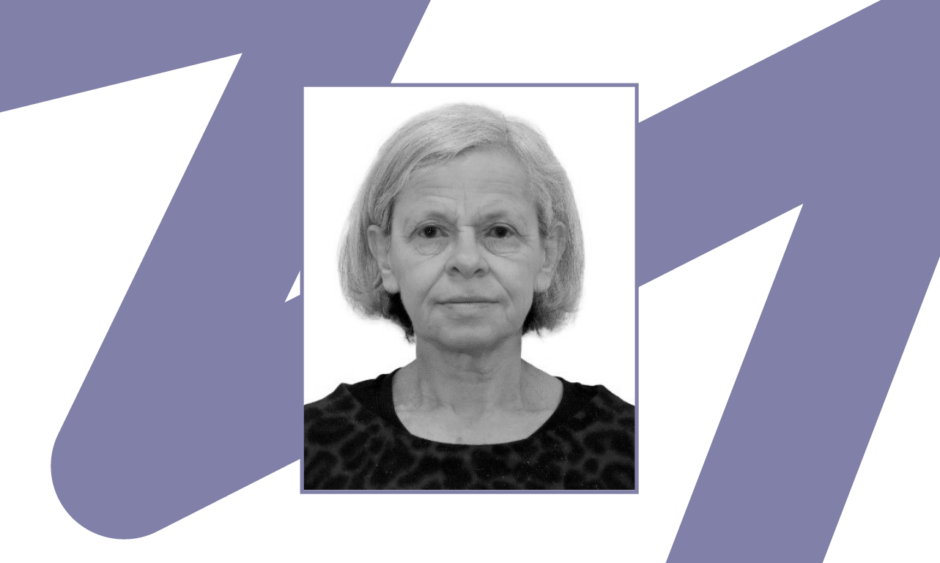Edwina Brown | Professor of Renal Medicine, Department of Immunology and Inflammation, Imperial College London; Consultant Nephrologist, Imperial College Renal and Transplant Centre, Hammersmith Hospital, London, UK
![]()
Following your medical education, what sparked your interest in nephrology in particular?
Pure chance. When I qualified in 1973, no women from my group at medical school were given jobs, and we were told to look elsewhere. My first post was at a district hospital with a newly appointed general physician who was also a nephrologist. My job as his ‘houseman’ was to take out the rigid peritoneal dialysis catheter at the end of 48 hours of inpatient exchanges (done manually by nurses) and replace this with a plastic rod, called a Dean’s prosthesis. I would then do the reverse when the person returned the next week. This continued until a haemodialysis space could be found. By the end of the job, I was putting in peritoneal dialysis catheters on my own. I loved the excitement of a new specialty and the associated physiology required to manage renal failure.
What does your role as a member of the scientific committee for the European Renal Association (ERA) entail?
A few meetings a year in advance to discuss the development of the programme, suggesting sessions and speakers. These were all on Zoom, which meant that they had to be fitted around usual activities. It also meant there was no networking with colleagues, and a lot of email work between meetings. Being European, there were no time zone problems, so meetings were not at antisocial times. At the actual meeting, it entailed being very busy with talks and chairing sessions. The pleasure of attending in-person meant that one could actually meet up with others on the committee.
What are the key themes of this year’s 59th ERA Congress?
From my viewpoint, the meeting had a much stronger clinical focus than many previous ones, with sessions on improving quality of dialysis delivery pertinent to both peritoneal and haemodialysis, on delivering person-centred care with shared decision making, and expanding access to home dialysis. There was also a drive to increase the number of younger speakers, who brought a different perspective because they talked more about their own work and projects rather than subject overviews. Being asked to be a speaker also stimulated some to carry out specific projects, which made talks much more exciting.
What are your thoughts on the hybrid format of this year’s congress? Do you feel that this optimises content outreach, or is an in-person event preferable for interaction?
In-person events are definitely preferable, with much better discussion after talks. In addition, networking between sessions develops ideas, as well as enabling contacts with colleagues both professionally and socially. Also, it means meeting new people; making new links; and being able to answer questions, advise, and inspire younger colleagues. However, the hybrid format does enable those who cannot travel because of work, family, or financial commitments to attend as a delegate or speaker. The hybrid nature definitely does not work when both chairs are virtual because there is no interaction with the audience.
How much of an impact do you believe that the ERA Congress has both directly on nephrologists and indirectly on patients?
The sessions at the conference had strong clinical messages and were well attended. The frequent mentioning of person-centred care, advantages of home dialysis, the benefits of shared decision-making, and updates on guidelines can only improve clinical care and benefit patients. There was also plenty of time for discussion after talks, which enabled nephrologists to engage with the topic and take away important messages. The ERA itself increasingly engages with young nephrologists, has fellowship opportunities for those in training, and runs regular clinical webinars. So, there are plenty of learning opportunities.
One of the ERA’s goals is to ‘strengthen the kidney community’. What steps is the organisation taking to achieve this?
I think the development of young speakers at the conference is a great way to strengthen the kidney community because it empowers those at the start of their career to continue doing activities and develop ideas outside their usual clinical workload. Hopefully, this will reinforce their role back at their home institution.
Are there any innovations on the horizon in the field of nephrology that you feel are particularly noteworthy?
The new drugs controlling the rate of decline in diabetic and chronic kidney disease are exciting; however, we still need to learn how best to use them. We need to target them to those who are going to benefit and not as a blanket exercise, regardless of age or comorbidities.
What do you believe are the current gaps in the literature that should be addressed in the near future?
One of the big gaps is the period leading up to starting dialysis. This remains more of an art than a science, and is often at the whim of an individual nephrologist or local healthcare practice. Too many people start during a temporary decline in kidney function or without personalised decision making and are then committed to an arduous treatment, which is going to have a major impact on their day-to-day living. I suspect that the time and thought that individuals spend on choosing a new car or other major expenditure are often more than they are enabled to have when choosing dialysis and when to start.






